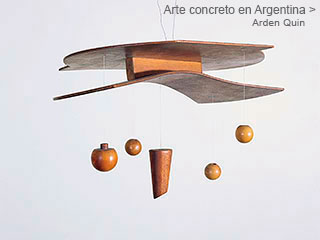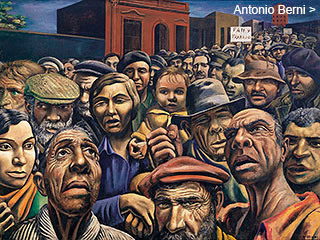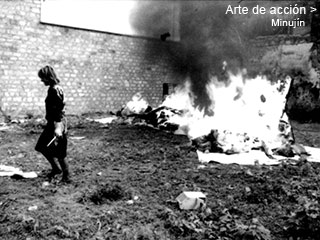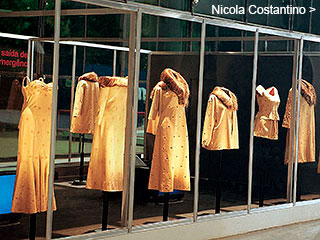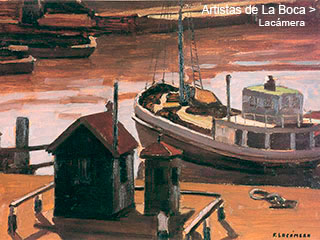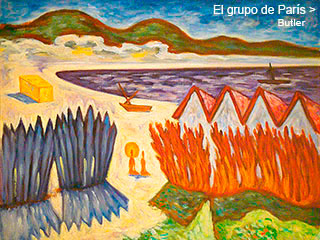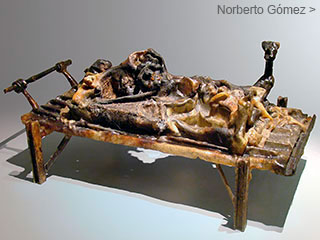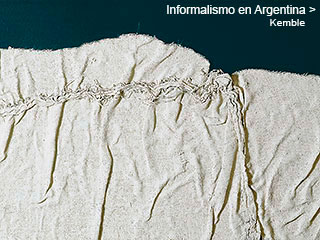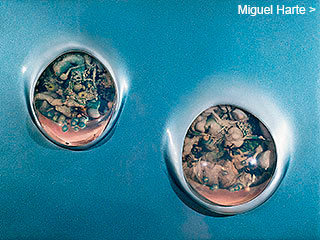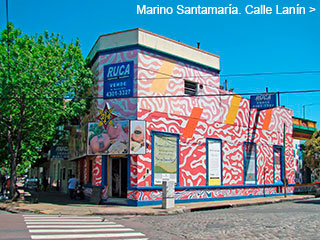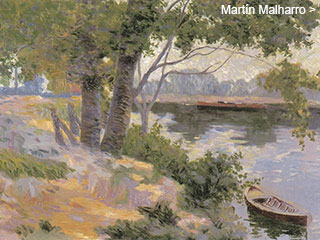Menú
Algunos dossiers
Concrete Art
in Argentina
in Argentina
by
Adriana Lauria
January 2003
January 2003
Abstraction asserted itself in Argentina through the achievements of groups such as Arte Concreto-Invención, Madí and Perceptismo, which developed their activity since the second half of the 1940s. These groups constituted the first organized national avant-garde and made their aesthetics known to the public through exhibitions, magazines, manifestoes, leaflets, lectures, etc.
Documents
Madi Manifesto
IT SHALL BE ACKNOWLEDGED AS MADÍ ART (Nemsorism) the organization of elements inherent to each art in their continuum.
The above mentioned includes presence, mobile dynamic array, development of the involved subject, ludicity and plurality as absolute values, being therefore abolished every interference from the expression, representation and signification phenomena.
The Madí drawing is an array of points and lines upon a surface.
The Madí painting, color and bi-dimensionality. Trimmed and irregular frame, flat surface and curved or concave surface. Articulate planes, with linear, rotary and translation motion.
The Madic sculpture, tri-dimensionality, no color. Total form and solids with an ambit, with articulation, rotation, translation motions, etc.
The Madí architecture, mobile, shiftable room and form.
The Madí music, inscription of sounds according to the golden section.
The Madí poetry, invented proposition, concepts and images not translatable through other means except language. Pure conceptual occurrence.
Madí theater, mobile scenography, invented dialogues.
The Madí novels and short stories, characters and action in non-determined time and place or in totally invented time and place.
The Madí dance, body and motions circumscriptive to a measured space, without music.
In those countries that have reached the highest stage of their industrial development, the old status of bourgeois realism has almost entirely disappeared; there, naturalism draws back and defends itself very weakly.
It is then when the abstraction, essentially expressive, romantic, takes its place. This involves figurative art schools from Cubism to Surrealism. Such schools have met the ideological needs of the time and their achievements are inestimable contributions to the solution of the problems posed to our days’ culture. Nevertheless, their historic time must be considered past. On the other hand, their insistence upon the “external” subject about its own features is a retrogression that serves Naturalism in opposition to the true constructive spirit now spreading through every country and culture, as it is the case of Expressionism, Surrealism, Constructivism, etc.
THE “CONCRETE” –which, in fact, is a younger branch of that abstractionist spirit– starts the great Non-figurative Art period, where the artist, taking the object and its respective continuum, creates the work in all its pureness, without hybridizations and objects alien to the essence of it. Yet, about “the CONCRETE”, there was a lack of universality and of steadiness in organization. There was a falling into deep and unsolvable contradictions. Huge vices and taboos from the ancient art were preserved, such as in painting, sculpture, poetry, etc., respectively superposition, rectangular frame, absence of a plastic theme; static condition, interference between volume and ambit; epistemological and graphically translatable propositions and images. As a consequence, Concrete art could not seriously oppose, through an organic theory and a disciplinary [sic] practice, the intuitionist movements that, as Surrealism, have conquered the whole universe. Hence the triumph, despite all opposite conditions, of the instinctive impulses versus reflection; of intuition versus consciousness; of the revealing of the subconscious versus cool analysis, study and the rigorous consideration by the creator in front of the laws of the object to be constituted; of symbolism, of the hermetic, the magic versus reality; of metaphysics versus experience.
As for the theory and knowledge about art, a subjective, idealistic, reactionary description stands out in them.
In synthesis: the art before Madí:
A scholastic, idealistic historicism.
An irrational conception.
An academic technique.
A unilateral, static, false composition.
A work lacking true essentiality.
A consciousness paralyzed because of its unsolvable contradictions; hermetic as to a permanent renewal of technique and style.
An irrational conception.
An academic technique.
A unilateral, static, false composition.
A work lacking true essentiality.
A consciousness paralyzed because of its unsolvable contradictions; hermetic as to a permanent renewal of technique and style.
Against the whole of it Madí rises up, validating man’s steady, absorbing desire to invent and construct objects within the absolute values of the eternal; together with humanity in its struggle to construct a new classless society that liberates the energy and dominates in every sense space and time, and matter until the last consequences.
Without fundamental descriptions referring to the whole of the organization, it is not possible to construct the object neither to make it penetrate in the constant order of the creation. Thus, it is how the concept of invention is defined within the field of technique, and the concept of creation as a wholly defined essence.
To Madism, the invention is an internal “method”, which can be improved, and the creation an irreplaceable wholeness. Madí, therefore, INVENTS and CREATES.
(...From the School’s manifesto)


